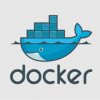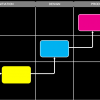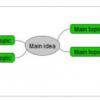Application Lifecycle Management
Articles
 |
Testing the Unexpected: A Shift Right in DevOps Testing When it comes to testing in DevOps, more than simple regression checking can be automated. By shifting right in the lifecycle and testing in production, you can analyze the undefined, unknown, and unexpected by relying on real traffic and unpredictable test input. With shorter implementation and release cycles, testing and production come closer together. |
|
 |
Use Version Control to Unlock Your Development Velocity Effective source code management provides a basis for every essential development best practice, including continuous integration and continuous delivery. The key is realizing just how much valuable metadata is being created in your source code management system and establishing the tools and procedures to make this information available. |
|
 |
Considering Containers: Is Docker Right for You? Over the past few years, containers have emerged as possibly the most important trend in enterprise technology since the advent of hardware virtualization—and Docker is the most popular. But what do containers really do, and is adopting Docker the right move for your organization? Read on to find out. |
|
 |
Visualizing the Complex Software Development Process Software development is an elaborate process, so many organizations follow defined procedures. But it can be difficult to keep track of every step. It is often helpful to try to visualize the complex processes involved; seeing them outlined can help you understand what needs to be completed and how to manage the overall effort. |
|
 |
6 Traits to Seek in an Outsourced Product Development Partner Lower costs, specialized designers, and rare skills sets are among the reasons companies consider working with outsourced product developers. But there are differences between working with these vendors versus the traditional enterprise software solution vendors you may be used to. Here are six qualities to look for when making your selection. |
|
 |
Application Lifecycle Management Approaches for Modern Software Delivery Application lifecycle management shouldn’t enforce existing IT and software delivery environments; the idea is to integrate as many tools and processes as possible into a unified workflow. The ALM journey continues forward, and, as technical and process trends come and go, the core principles are perhaps more relevant than ever. |
|
 |
Using Mind Maps to Create Comprehensive Test Plans in Your ALM Mind maps work well for planning the test strategy and monitoring project status. Mind-mapping software makes all this easy, and the visual presentation keeps everyone in the loop. Ritinder Kaur shows how mind maps can communicate ideas clearly and help you execute them exactly to create a comprehensive test plan. |
|
 |
Using Agile Application Lifecycle Management to Streamline Status Accounting Status accounting is following the evolution of a configuration item through its lifecycle. Using application lifecycle management along with agile helps prevent mistakes, but lets you have the minimum amount of red tape; the team achieves an acceptable velocity without being unduly burdened with too much process. |
|
 |
Understanding Culture and Agile Application Lifecycle Management While the technical complexity of real-world ALM may be substantial, sometimes the people issues present even more complex challenges. Being able to understand the personalities and work culture of the folks doing the work can help you implement ALM in a comprehensive and effective way. |
|
 |
6 Steps to Bridge DevOps with Release Management in the Enterprise Balancing time-to-market pressures with regulatory needs and business continuity demands is a challenge for highly regulated large enterprises. Automating processes and mastering proven practices of release management makes developing and releasing software predictable, reliable, and repeatable. |
Pages
Recommended Web Seminars
| May 23 | How Generative AI Boosts Speed and Quality in Software Testing |
| On Demand | Building Confidence in Your Automation |
| On Demand | Leveraging Open Source Tools for DevSecOps |
| On Demand | Five Reasons Why Agile Isn't Working |
| On Demand | Building a Stellar Team |











